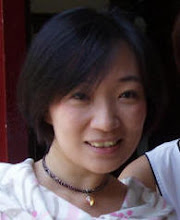When the BBC's Zahid Warley arrived in Iran for a special Radio 4 programme, it was not his first visit - that was in the 70s when Tehran was a stop-off on the hippy trail.
BBC的Zahid Warley為了Radio 4的特別節目來到伊朗,,這可不是他生平第一次到這裡 - 他的初次造訪是在70年代,當時的伊朗還只是「嬉皮之路」[1]上的一個休憩站。

The images that surface from that first visit are fragmentary but vivid: the deep red of the pomegranate juice served to us from a bucket by a street vendor; the fresh laundry smell of the steamed rice and kebabs that we ate pretty well every day, and a truly hallucinatory hotel where, as we were waiting to check in, I turned and saw - or thought I saw - a goat munching sugar from one of the bowls in the restaurant.
初次造訪時所浮現的印象雖是片片斷斷的,但卻很清晰:街頭小販為我們遞上從桶子裡倒出來的深紅色石榴汁;味道聞起來像是洗淨了的衣服的白飯和我們幾乎每天都吃的烤肉串,還有一個讓你真的會產生幻覺的旅館,在那裡,正當我們等著辦理住宿登記時,我轉身赫見 - 或以為我看見 - 一隻山羊在餐廳裡正津津有味的嚼著裝在碗裡的糖。
There are other more typical impressions, of course: the turquoise and apricot coloured domes of the mosques in Isfahan and the insanity of the traffic in Tehran.
當然,還有其他更具代表性的印象:伊斯法罕有著藍綠色、杏黃色的圓頂清真寺,以及德黑蘭混亂失序的交通。
I am glad to say that I saw nothing of the goat this time but the mosques and the traffic were much the same.
我很高興這次並沒有看到什麼羊,但是清真寺和交通卻依舊不變。
It is estimated that there are something like 14 million people in Tehran, and when you try to cross the road it can seem as if they are all queuing up to roar past.
估計好像約有一百四十多萬人住在德黑蘭,當你在試圖橫越馬路時,就好像所有的人同時擠在隊伍中等著要呼嘯而過。
Red can mean stop and green can mean go but traffic lights seem to be merely advisory and there is no right or wrong side of the road.
紅燈可以是停的意思,綠燈可以表示行,但是交通號誌在這裡似乎只是參考用,而且路還沒有必然的方向性。
I was delighted to learn that Mahmoud Ahmadinejad, Iran's President and a one time mayor of Tehran has a degree in traffic management. Make of that what you will.
當我得知Mahmoud Ahmadinejad這位伊朗的總統,同時也是做過一個任期的德黑蘭市長居然擁有交通運輸工程的博士學位時,讓我不禁失笑了。那就入境隨俗你愛怎麼走就怎麼走。
Three moments
Luckily, I was never called upon to take the wheel.
幸好我不必在這種地方開車。
This was the responsibility of our driver, Mr Dashti, who drove his four-wheel-drive in and out of all the obstacles placed in his path with the skill of Michael Schumacher.
這就有勞我們的司機Mr Dashti,他開著他那輛四輪驅動的車子,用媲美車神舒馬克的技術跨越行經之處所有的障礙。
This left me free to consider the purpose of my visit - to make a programme with the director of the British Museum, Neil MacGregor, about Iran's ancient past and how it affects a modern Iranian's sense of identity.
這讓我有時間好好思考一下此行的目的 – 就是和大英博物館館長Neil MacGregor一起製作一個節目,關於伊朗古老的過去並探討這些過去何以影響現代伊朗人的認同感。
We decided to focus on three moments when Iranian identity seemed to crystallise: The birth of the Persian Empire under Cyrus the Great in 550 BC, the foundation of a Shia state under Shah Abbas in the 16th Century and the empire of language and letters established by the 14th Century poet, Hafez.
我們決定將焦點放在三個關鍵時刻,三個都是在伊朗的國家主體幾近成形的時刻:西元前550年,居魯士大帝統治的波斯帝國的誕生,16世紀阿拔斯一世[2]掌權,奠定了什葉派國家的基礎,以及由14世紀的詩人哈菲茲[3]創建了語言與文字的帝國。
A road journey across a featureless plain surrounded by the Zagros mountains took us to the tomb of Cyrus, a kind of stepped pyramid surmounted by a stone ark.
一條道路橫亙在札格洛斯山所包圍的一片景致單調的高原上,領著我們到居魯士的陵墓前,這個墓有幾分像階梯金字塔,上頭再覆蓋一個石製的平底船。
There is not much more to be seen even though the place - Pasargadae - was once the capital of Persia's first ruler.
接著就沒太多東西可以看了,甚至連Pasargadae這個曾為波斯第一位統治者當做首都的地方也不例外。
It made me think of Ozymandias, the heat reducing everything to dust and a buffeting wind blowing it all away.
不禁讓我想起了Ozymandias[4],高熱把一切化做塵土,在狂風中驟然消逝無蹤。
The achievements of Cyrus are more durable, though.
還是居魯士的成就比較經得起時間的考驗。
He is remembered not just for uniting the Medes and the Persians but also for formulating what has been called the first declaration of human rights.
他不只因統一米提與波斯而被歷史牢牢的記住,他還頒布了有史以來第一份人權宣言。
Beautiful lens
The next stage of our journey took us several hundred miles north to another city - the Isfahan of Shah Abbas.
行程的下一站是要前往距離此處幾百哩以北的另一個城市 – 阿拔斯一世的伊斯法罕。

Isfahan is the beautiful lens through which Persian culture is most often seen.
伊斯法罕是塊美麗的透鏡,波斯的文化最常藉由它呈現在世人眼前。
English poet Vita Sackville West thought it was built out of light itself, and I could not keep this thought out of my mind when I stood recording with Neil MacGregor in Imam Square.
英國詩人Vita Sackville West認為伊斯法罕這個城市在打造時已經把所有的光都用掉了,當我和Neil MacGregor站在伊瑪目廣場做記錄時,這個想法一直揮之不去。
Dusk was falling and the sky was turning from pale blue to violet.
黃昏悄然而至,將原本淡藍的天空抹上一層紫色。
Horse-drawn carriages were tinkling round the periphery and families were spreading their picnic rugs.
由馬兒拉的車子發出的叮噹聲在四周響起,許多家庭正攤開他們的野餐墊毯。
Kettles hissed on primus stoves and the air turned spicy with the smell of food.
水壺在爐具上發出了嘶嘶聲,空氣中轉而瀰漫了香料和著食物的芬芳。
There could be no better symbol of Shah Abbas and his aspirations - spiritual and temporal power in harmony and the people held in the benign civic embrace of a society deriving its strength from Shi'ism.
再也沒有什麼會比這更好用來象徵阿拔斯一世和他所抱負的事情了 - 精神與世俗力量的相互調合,並以一個充滿什葉派教義力量的社會,吸引人們留在它親切和煦城市的懷抱中。
Mystical understanding
Our examination of the third aspect of Persia's imperial past involved a trip further south to Shiraz and the tomb of the poet, Hafez.
第三個用來審視昔日波斯帝國的觀點則需要我們到更南方的設拉子以及拜訪詩人哈菲茲的墓園。

Nothing could have prepared us for what we saw.
眼前的所發生的事卻讓我們措手不及。
There were hundreds and hundreds of people milling about.
數以百計的人們在墓園裡逛來逛去。
If you can imagine a large formal garden surrounding Wordsworth's Dove Cottage with a tea house to one side where you can eat rose petal ice cream and smoke a hubble bubble then you get the idea.
你可以這樣想像一大片整齊的花園圍繞在詩人渥茲華斯的故居「鴿舍」,一旁還有一間小茶館,你可以嚐嚐用玫瑰花瓣做的冰淇淋或者抽抽水煙,你大概就會明白了。
The Persian language, it seems, is still very much the same as it was in the 14th Century.
波斯語,從14世紀到現在似乎仍維持著原有的樣子。
And Hafez has a mystical, tolerant understanding of Islam which is well-suited to his graceful idiom.
哈菲茲對伊斯蘭有一種神秘主義式的、包容的理解力,那正適合他優雅的風格。
A couple of days later as I waited for Mr Dashti to turn up with the car and barge a passage to the airport and the plane to take us home, I turned over what we had heard from the people we had met.
幾天以後,當我正等待Mr Dashti開著他的車子出現,好闖出一條路到機場讓我們順順利利搭機返家時,我仔細的思考從我們遇到的人們那邊聽來的那些話。
There was no doubt that Hafez, Cyrus and Shah Abbas colour the way that modern Iranians think of themselves.
毫無疑問的,哈菲茲、居魯士和阿拔斯一世影響了現代伊朗人看待自己的方式。
But what they stand for left me with a question which I have not been able to resolve.
但是他們所代表的卻留給我一個長久以來未能參透的問題。
Why do the leaders of today's Islamic Republic of Iran appear so unbending in the West when Shah Abbas and Cyrus were so renowned for their tolerance?
為什麼當今伊朗伊斯蘭共和國的領袖們對西方國家的態度這麼不可親,而阿拔斯一世和居魯士卻是以他們的寬容著稱?
Story from BBC NEWS:
http://news.bbc.co.uk/2/hi/programmes/from_our_own_correspondent/5364222.stm
Published: 2006/09/21 11:56:36 GMT
© BBC MMVII
[1]嬉皮之路 (Hippie trail) 是風行於上個世紀六、七十年代的一條跨越歐亞大陸的自助旅行路線,大致上是從丹麥的阿姆斯特丹一路往東,途經中亞的伊斯坦堡(Istanbul)、德黑蘭(Tehran) 、喀布爾(Kabul) 、白沙瓦(Peshawar)、拉合爾(Lahore)等城市,最後以尼泊爾的加德滿都(Kathmandu)或是印度的果亞(Goa)為終點。http://caisting.blogspot.com/2007/06/hippie-trail.html
[2] 薩法維王朝君主阿拔斯一世(Shah Abbas I,1578-1629)。
[3] 哈菲茲本名Shamsoddin Mohammad,約1320-1389,14世紀伊朗偉大的抒情詩人和神秘主義詩人
[4] Ozymandias也就是Ramesses the Great,法老王,古埃及第十九王朝的創建者。


沒有留言:
張貼留言